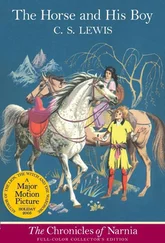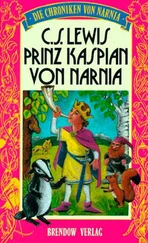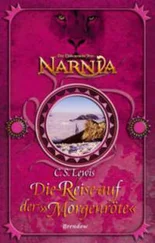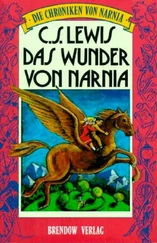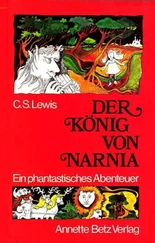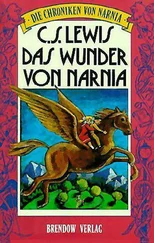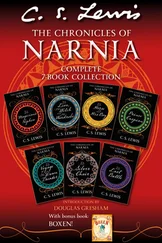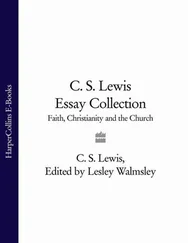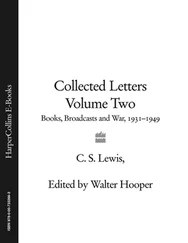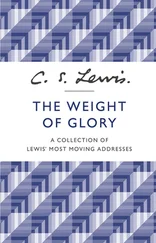Yours ever
C. S. Lewis
TO DON GIOVANNI CALABRIA (V):
E Collegio S. Mariae Magdalenae
apud Oxonienses
Die S. Stephani MCMLI[26 December 1951]
Dilectissime Pater
Grato animo epistulam tuam hodie accepi et omnia bona spir-itualia et temporalia tibi in Domino invoco. Mihi in praeterito anno accidit magnum gaudium quod quamquam difficile est verbis exprimere conabor.
Mirum est quod interdum credimus nos credere quae re verâ ex corde non credimus. Diu credebam me credere in remissionem peccatorum. Ac subito (in die S. Marci) haec veritas in mente mea tam manifesto lumine apparuit ut perciperem me numquam antea (etiam post multas confessiones et absolutiones) toto corde hoc credidisse. Tantum distat inter intellectûs mera affirmatio et illa fides medullitus infixa et quasi palpabilis quam apostolus scripsit esse substantiam .
Fortasse haec liberatio concessa est tuis pro me intercessionibus! Confortat me ad dicendum tibi quod vix débet laicus ad sacerdotem, junior ad seniorem, dicere. (Attamen ex ore infantium: immo olim ad Balaam ex ore asini!). Hoc est: multum scribes de tuis peccatis. Cave (liceat mihi, dilectissime pater, dicere cave) ne humilitas in anxietatem aut tristitiam transeat. Mandatum est gaude et semper gaude . Jesus abolevit chirographiam quae contra nos erat. Sursum corda! Indulge mihi, precor, has balbutiones. Semper in meis orationibus et es et eris. Vale.
C. S. Lewis
*
from the College of St Mary Magdalen
Oxford
St Stephen’s Day [26 December] 1951
Dearest Father
Thank you for the letter which I have received from you today and I invoke upon you all spiritual and temporal blessings in the Lord.
As for myself, during the past year a great joy has befallen me. Difficult though it is, I shall try to explain this in words. It is astonishing that sometimes we believe that we believe what, really, in our heart, we do not believe.
For a long time I believed that I believed in the forgiveness of sins. But suddenly (on St Mark’s day) 162 this truth appeared in my mind in so clear a light that I perceived that never before (and that after many confessions and absolutions) had I believed it with my whole heart.
So great is the difference between mere affirmation by the intellect and that faith, fixed in the very marrow and as it were palpable, which the Apostle wrote was substance. 163
Perhaps I was granted this deliverance in response to your intercessions on my behalf!
This emboldens me to say to you something that a layman ought scarcely to say to a priest nor a junior to a senior. (On the other hand, out of the mouths of babes: 164 indeed, as once to Balaam, out of the mouth of an ass!) 165 It is this: you write much about your own sins. Beware (permit me, my dearest Father, to say beware) lest humility should pass over into anxiety or sadness. It is bidden us to ‘rejoice and always rejoice’. 166 lesus has cancelled the handwriting which was against us. 167 Lift up our hearts!
Permit me, I pray you, these stammerings. You are ever in my prayers and ever will be.
Farewell.
C. S. Lewis
11 Timothy 2:1: ‘I exhort therefore, that, first of all, supplications, prayers, intercessions, and giving of thanks, be made for all men.’
2Many of these thoughts were later to go into Lewis’s essay, ‘The Efficacy of Prayer’, published in Fern-seed and Elephants and Other Essays on Christianity , ed. Walter Hooper (London: Collins, 1975; Fount, 1998).
3Vanauken had asked Lewis his opinion as to whether he should continue with his postgraduate work in history or study theology.
4Francis Bacon, Essays (1625), ‘Of Atheism’: ‘The great atheists, indeed are hypocrites; which are ever handling holy things, but without feeling; so as they must needs be cauterized in the end.’
5Pauline Baynes was illustrating the Narnian books.
6At a meeting with Geoffrey Bles in London on 1 January 1951 Lewis gave Pauline Baynes a map he had drawn of Narnia bordered on the north by the ‘Wild Lands of the North’ as well as his drawing of a Monopod. In this letter he refers to that map which is in the Bodleian Library. (MS. Eng. lett. c. 220/1, fol. 160), and is reproduced by the Bodleian as a postcard. Baynes used Lewis’s original map to draw (1) ‘A Map of Narnian and Adjoining Lands’ which appeared on the endpapers of Prince Caspian; (2) a map of the Bight of Calormen and the Lone Islands of the Great Eastern Ocean which appeared on the endpapers of The Voyage of the ‘Dawn Treader’ (1952); (3) ‘A Map of the Wild Lands of the North’ which appeared on the endpapers of The Silver Chair (1953); and (4) a map on the endpapers of The Horse and His Boy (1954) showing the position of Tashbaan, the Desert and Archenland.
7George MacDonald, Unspoken Sermons , 2nd series (1885), ‘The Fear of God’, p. 163.
8See Percy Howard Newby, writer and broadcasting administrator, in the Biographical Appendix.
9Newby, Organizer of Third Programme Talks for the BBC, had written to Lewis on 9 February 1951: ‘From time to time we broadcast in the Third Programme talks under the general title of “Work in Progress”, the general idea being that scholars and critics should discuss the nature and scope of a particular book they are engaged upon. We should be very happy if you would talk in this way about the volume you are preparing for the Oxford History of English Literature.’
10William Lewis Kinter (1915–) was born in St Thomas, Pennsylvania, on 21 October 1915. He took a BA in English from Lafayette College, Easton, Pennsylvania, in 1938, another BA from Yale University in 1940, and a PhD from Columbia University, New York, in 1958. He taught Latin and English at Westminster School, Hartford, Connecticut, 1944-6, was Assistant Professor of English at Muhlenberg College, Allentown, Pennsylvania, 1946-62, and Associate Professor of English at Loyola College, Baltimore, Maryland, 1962-78. From there he became Chairman of the Department of Language and Literature at the Maryland Institute College of Art in Baltimore. He is the author, with loseph R. Keller, of The Sibyl: Prophetess of Antiquity and Medieval Fay (Philadelphia: Dorrance, 1967).
11 Spirits in Bondage: A Cycle of Lyrics (1919), Lewis’s first book, was published under the pseudonym ‘Clive Hamilton’. See CL I, p. 443n.
12 Dymer , with a preface by the author (London: Dent; New York: Macmillan, 1950).
13i.e. Lewis’s interplanetary trilogy, Out of the Silent Planet, Perelandra and That Hideous Strength .
14Ludovico Ariosto (1474-1535) was the author of Orlando Furioso (1532). See The Allegory of Love , Ch 7, Sect. 1, pp. 312-13).
15Bernardus Silvestris, De Mundi Universitate , ed. Carl Sigmund Barach and lohann Wrobel (Innsbruck: Verlag der Wagner’schen Universitats-Buchhandlung, 1876).
16Dwight D. Eisenhower (1890-69), American general and President of the United States, 1953-61, who launched the invasion of Normandy on 6 June 1944 and oversaw the final defeat of Germany. In 1950 President Truman asked Eisenhower to become supreme commander of the North Atlantic Treaty Organization (NATO), and in 1951 he flew to Paris to assume his new position. For the next fifteen months he devoted himself to the task of creating a united military organization in western Europe to be a defence against the possibility of Communist aggression.
17On Mrs Alice Hamilton Moore (1853-1939), see CL II, p. 281n.
18Rider Haggard, She (1887); Ayesha (1905); She and Allan (1921); Wisdom’s Daughter (1923).
Читать дальше

